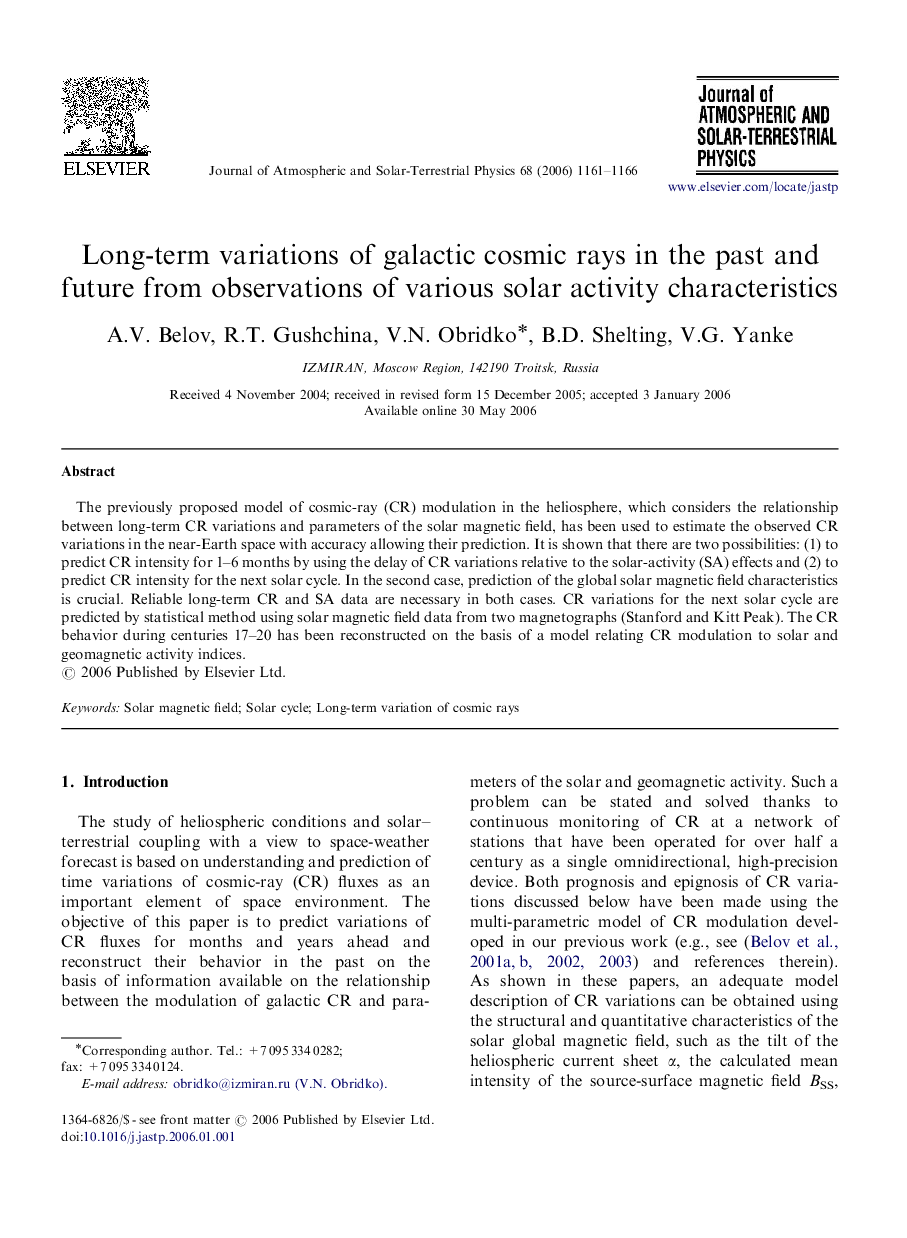| Article ID | Journal | Published Year | Pages | File Type |
|---|---|---|---|---|
| 1778377 | Journal of Atmospheric and Solar-Terrestrial Physics | 2006 | 6 Pages |
The previously proposed model of cosmic-ray (CR) modulation in the heliosphere, which considers the relationship between long-term CR variations and parameters of the solar magnetic field, has been used to estimate the observed CR variations in the near-Earth space with accuracy allowing their prediction. It is shown that there are two possibilities: (1) to predict CR intensity for 1–6 months by using the delay of CR variations relative to the solar-activity (SA) effects and (2) to predict CR intensity for the next solar cycle. In the second case, prediction of the global solar magnetic field characteristics is crucial. Reliable long-term CR and SA data are necessary in both cases. CR variations for the next solar cycle are predicted by statistical method using solar magnetic field data from two magnetographs (Stanford and Kitt Peak). The CR behavior during centuries 17–20 has been reconstructed on the basis of a model relating CR modulation to solar and geomagnetic activity indices.
